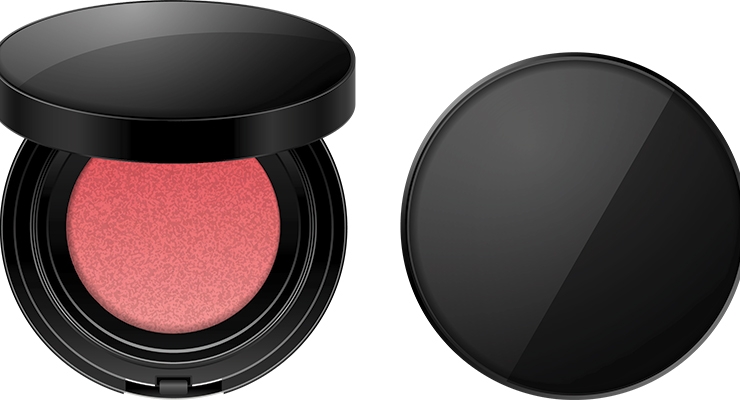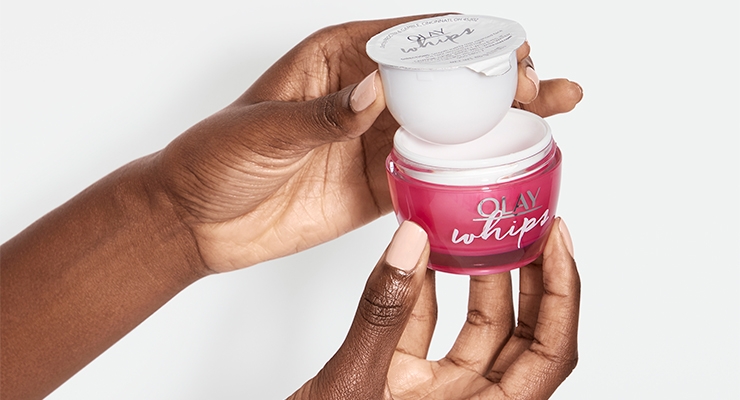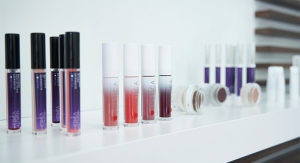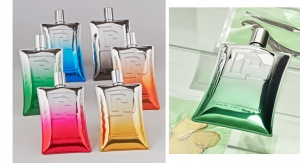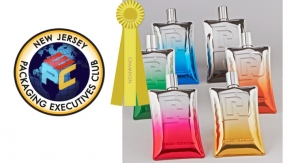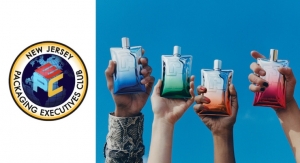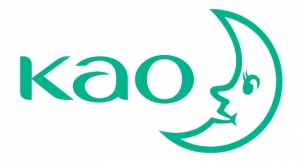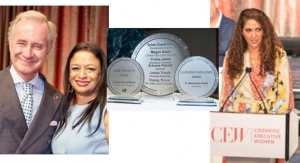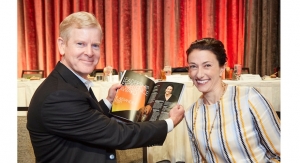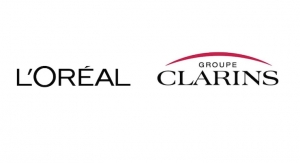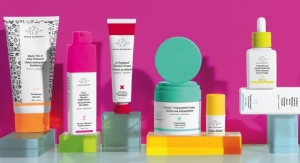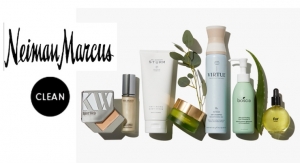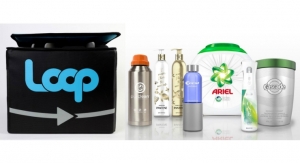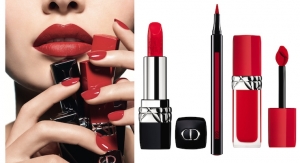Kayla Villena, senior beauty analyst, Euromonitor International12.10.19
Sustainability has become an important concern in the beauty and personal care industry, but its exact meaning to consumers is subject to interpretation. Refillable packaging concepts can help achieve environmental and financial sustainability, but have their own sets of challenges due to the changes required in consumer purchasing behavior. How is the beauty and personal care market introducing refillable packaging to consumers, and is it enough to help solve the sustainability crisis in the long-run?
Euromonitor’s Health and Nutrition Survey confirms that the environment is a top concern among consumers. In 2019, 63% of U.S. respondents agreed that they try to have a positive impact on the environment through everyday actions. Additionally, sustainable/green/ethical features were among the most important new beauty and personal care product launches in 2018, according to Euromonitor’s survey of beauty and personal care industry professionals. The word “sustainability,” much like the term “naturals” in beauty and personal care, has become a nebulous term that, although it generates a positive reaction, is interpreted differently among consumers.
Sustainability focuses on meeting the needs of the present without compromising the ability of future generations to meet their own needs. Sustainability has three pillars—economic, environmental and social. Given the different levels of understanding among consumers, how can beauty and personal care brands zoom into the concept of sustainability in a way that is easy for consumers to understand, minimizes pressure on the environment, and encourages a change in personal consumption behavior?
One trending manifestation of sustainability in beauty and personal care in the U.S. is refillable packaging, and it is gaining traction among smaller Indie players, mid-size players, and multi-national CPG firms.
Different Concepts of Refillable Packaging
Refillable packaging is not new, but it has evolved into an area of growth and opportunity for beauty and personal care players. An earlier generation of refillable packaging was concentrated in large pack sizes that consumers can use to replenish the contents of a smaller bottle, such as Dial Hand Soap Refill in 52 fluid ounce PET. Although consumers were able to purchase the product at a cheaper price per unit, resources were still required to produce the large rigid plastic, fill it with the product, and ship it to a retail location, with only a passive call to action to recycle the single-use plastic bottle. Eventually, some brands opted to use stand-up flexible plastic pouches, which had lower breakage rates and can be more densely packed in palettes, resulting in lower shipping costs. S.C. Johnson’s Method capitalized on this refill format in their line of hand soaps while Latin American cosmetics giant Natura&Co uses this pack type not just for its hand soap items, but also for its skincare products.
There is an effort to introduce in-store refill stations, a strategy that Neal’s Yard Remedies introduced in August 2019 in the UK. Drawing on the concept of bringing empty spice jars to grocery stores and refilling them from bulk containers that remained in-store, select Neal’s Yard locations equipped refill stations with the brand’s two best-selling products (a hand soap and shower gel), making them available to consumers at a discount. Although the refill station resulted in the purchase of fewer PET bottles and increased the utility of consumers’ original Neal’s Yard bottles, making consumers aware they can refill in-store and getting consumers to physically bring their own bottles to the store are difficult tasks to achieve.
“The American consumer doesn’t feel pushed to send products back until the culture evolves,” commented Rod Vilencia, vice president of sales & marketing at SeaCliff Beauty in Irvine, California. The additional call to action and shift on consumers’ shopping behavior may hinder mainstream adoption of Terracycle’s Loop program, which launched in May 2019 and resulted in reusable, returnable containers designed in tandem with major CPG companies in an effort to generate less packaging waste. Although the concept of Loop meets the criteria of economic and environmental sustainability, its success is highly dependent on consumer behavior that prioritizes returns.
Rather than make large-size containers, design refill stations, or require return of packaging, beauty and personal care players are increasingly developing refills identical in size to the original product and that consumers can swap out when the product is finished, while retaining the original product’s base. “Refillable packaging is a viable option. It’s easier for consumers to understand refills than new systems of return,” Vilencia stated. Refillable packaging opportunities vary by product category.
“Skincare consumers pay a lot of attention to environmental concerns and packaging sustainability,” Vilencia added, suggesting that skincare will be the focus for refillable packaging innovation. Several players have already announced refillable packaging concepts in skincare. Dior’s Capture Dreamskin Care and Perfect Refill which slides into a rigid plastic container base, has been on the market since March 2017. Procter & Gamble’s Olay Regenerist Whip moisturizer is currently piloting its pod-format of facial moisturizer in the U.S. and the UK, which fits neatly in its original plastic jar/tub, before replicating the refill format in other product categories and brands. Building on top of personalization trends, Estée Lauder’s Clinique iD allows consumers to mix-and-match hydrating bases and active ingredients to create a color-coded cartridge that fits neatly inside a moisturizer, which then uses a pump that simultaneously dispenses targeted ingredients and moisturizer.
Opportunities in Color Cosmetics and Beyond
Color cosmetics is an untapped space for refillable packaging, but sustainability will become an even greater trend as more U.S. consumers are applying expectations common in skincare to color cosmetics. In 2019, Aptar debuted its naked lipstick refills, currently used in vegan brand Lush’s plastic-free, vintage, refillable lipstick cases. Other lipstick refills include Bond No. 9 New York, La Bouche Rouge, and Kjaer Weis in Western Europe, while Hourglass Cosmetics makes refillable lipsticks in a slim applicator. Amorepacific produces a refill for its Color Control Cushion Compact, but only includes one refill with a purchase of a compact and does not allow consumers to purchase refills only, which hinders the economic sustainability of the product. A refillable mascara brand is currently being developed and awaiting launch in the U.S.
Refillable packaging extends beyond refillable cartridges, pods and lipstick bullets. In 2018, Silgan developed the Melodie Pirouette fragrance packaging, which allows consumers to refill and recycle the packaging. According to Silgan, “a removable plastic threaded ferrule pump separates the pump from the glass bottle and allows for recycling of the glass.” In a category like fragrances, which prioritizes brand image over sustainability, opportunities for refillable packaging may resonate with consumers because sustainable options did not exist in the past, aside from limited fragrance stations from brands like Molton Brown and Thierry Mugler. There is also potential to adapt refillable packaging from other industries. Unilever-owned Cif, a surface care brand, has a refill, which includes a concentrated formula that attaches to the top of the original plastic bottle, which is filled with water to a certain level to mix with the concentrated formula. Ideas like Cif could be applicable to body mists and body splash products, which are mainly packaged in PET with pump spray dispensers.
Rising to the Challenge
Beauty and personal care companies are setting high sustainability goals to combat the build-up of unusable, non-recyclable, non-degradable waste. L’Oréal announced that by 2025, all of its plastic packaging will be rechargeable, refillable, recyclable or compostable. Similarly, Estée Lauder announced that by the same year, 75% of its products will be recyclable, refillable, reusable, recycled or recoverable. Unilever Group has been at the forefront of sustainability among multi-national CPGs. In addition to a strategy that uses less plastic, uses better plastic, or no plastic, it is currently testing a refill method through vending machines.
While refillable packaging still requires the resources to make, produce, and ship refills, refill stations, refill pods, and other refill formats, the concept of refills is easy for consumers to understand. However, a major challenge lies in steering consumers away from single-use product—the default format—to refills, which may necessitate discounting or other financial incentives to change consumer purchasing behavior, and even then, may not completely result in consumers switching solely to refill formats. Also, slowing down the rate of which waste from the beauty industry is reduced in a meaningful way is contingent upon the majority of beauty and personal care players adopting this refill strategy, which may be a higher priority for those with resources to invest in new refillable packaging lines and formats and a lower priority for brands for whom sustainability is not a concern or not a viable option. Buy-in from a few large CPGs may not move the needle if most players in a given market or industry aren’t adapting to refillable packaging or other sustainable initiatives. Despite these challenges, refillable packaging is a way for brands to save on costs and to communicate to consumers that they are interested in values beyond profits. It is a way for companies to develop creative packaging solutions that differentiate themselves from other players while they take a stance to reduce single-use packaging. It is an opportunity for companies to pause and rethink their processes in a way that benefits profits, plant and people.
Expect aggressive momentum and innovation in refillable beauty and personal care packaging in the next six years as companies seek to achieve their sustainability goals by 2025.
About the author
Kayla Villena is senior beauty analyst at Euromonitor International.
Euromonitor’s Health and Nutrition Survey confirms that the environment is a top concern among consumers. In 2019, 63% of U.S. respondents agreed that they try to have a positive impact on the environment through everyday actions. Additionally, sustainable/green/ethical features were among the most important new beauty and personal care product launches in 2018, according to Euromonitor’s survey of beauty and personal care industry professionals. The word “sustainability,” much like the term “naturals” in beauty and personal care, has become a nebulous term that, although it generates a positive reaction, is interpreted differently among consumers.
Sustainability focuses on meeting the needs of the present without compromising the ability of future generations to meet their own needs. Sustainability has three pillars—economic, environmental and social. Given the different levels of understanding among consumers, how can beauty and personal care brands zoom into the concept of sustainability in a way that is easy for consumers to understand, minimizes pressure on the environment, and encourages a change in personal consumption behavior?
One trending manifestation of sustainability in beauty and personal care in the U.S. is refillable packaging, and it is gaining traction among smaller Indie players, mid-size players, and multi-national CPG firms.
Different Concepts of Refillable Packaging
Refillable packaging is not new, but it has evolved into an area of growth and opportunity for beauty and personal care players. An earlier generation of refillable packaging was concentrated in large pack sizes that consumers can use to replenish the contents of a smaller bottle, such as Dial Hand Soap Refill in 52 fluid ounce PET. Although consumers were able to purchase the product at a cheaper price per unit, resources were still required to produce the large rigid plastic, fill it with the product, and ship it to a retail location, with only a passive call to action to recycle the single-use plastic bottle. Eventually, some brands opted to use stand-up flexible plastic pouches, which had lower breakage rates and can be more densely packed in palettes, resulting in lower shipping costs. S.C. Johnson’s Method capitalized on this refill format in their line of hand soaps while Latin American cosmetics giant Natura&Co uses this pack type not just for its hand soap items, but also for its skincare products.
There is an effort to introduce in-store refill stations, a strategy that Neal’s Yard Remedies introduced in August 2019 in the UK. Drawing on the concept of bringing empty spice jars to grocery stores and refilling them from bulk containers that remained in-store, select Neal’s Yard locations equipped refill stations with the brand’s two best-selling products (a hand soap and shower gel), making them available to consumers at a discount. Although the refill station resulted in the purchase of fewer PET bottles and increased the utility of consumers’ original Neal’s Yard bottles, making consumers aware they can refill in-store and getting consumers to physically bring their own bottles to the store are difficult tasks to achieve.
“The American consumer doesn’t feel pushed to send products back until the culture evolves,” commented Rod Vilencia, vice president of sales & marketing at SeaCliff Beauty in Irvine, California. The additional call to action and shift on consumers’ shopping behavior may hinder mainstream adoption of Terracycle’s Loop program, which launched in May 2019 and resulted in reusable, returnable containers designed in tandem with major CPG companies in an effort to generate less packaging waste. Although the concept of Loop meets the criteria of economic and environmental sustainability, its success is highly dependent on consumer behavior that prioritizes returns.
Rather than make large-size containers, design refill stations, or require return of packaging, beauty and personal care players are increasingly developing refills identical in size to the original product and that consumers can swap out when the product is finished, while retaining the original product’s base. “Refillable packaging is a viable option. It’s easier for consumers to understand refills than new systems of return,” Vilencia stated. Refillable packaging opportunities vary by product category.
“Skincare consumers pay a lot of attention to environmental concerns and packaging sustainability,” Vilencia added, suggesting that skincare will be the focus for refillable packaging innovation. Several players have already announced refillable packaging concepts in skincare. Dior’s Capture Dreamskin Care and Perfect Refill which slides into a rigid plastic container base, has been on the market since March 2017. Procter & Gamble’s Olay Regenerist Whip moisturizer is currently piloting its pod-format of facial moisturizer in the U.S. and the UK, which fits neatly in its original plastic jar/tub, before replicating the refill format in other product categories and brands. Building on top of personalization trends, Estée Lauder’s Clinique iD allows consumers to mix-and-match hydrating bases and active ingredients to create a color-coded cartridge that fits neatly inside a moisturizer, which then uses a pump that simultaneously dispenses targeted ingredients and moisturizer.
Opportunities in Color Cosmetics and Beyond
Color cosmetics is an untapped space for refillable packaging, but sustainability will become an even greater trend as more U.S. consumers are applying expectations common in skincare to color cosmetics. In 2019, Aptar debuted its naked lipstick refills, currently used in vegan brand Lush’s plastic-free, vintage, refillable lipstick cases. Other lipstick refills include Bond No. 9 New York, La Bouche Rouge, and Kjaer Weis in Western Europe, while Hourglass Cosmetics makes refillable lipsticks in a slim applicator. Amorepacific produces a refill for its Color Control Cushion Compact, but only includes one refill with a purchase of a compact and does not allow consumers to purchase refills only, which hinders the economic sustainability of the product. A refillable mascara brand is currently being developed and awaiting launch in the U.S.
Refillable packaging extends beyond refillable cartridges, pods and lipstick bullets. In 2018, Silgan developed the Melodie Pirouette fragrance packaging, which allows consumers to refill and recycle the packaging. According to Silgan, “a removable plastic threaded ferrule pump separates the pump from the glass bottle and allows for recycling of the glass.” In a category like fragrances, which prioritizes brand image over sustainability, opportunities for refillable packaging may resonate with consumers because sustainable options did not exist in the past, aside from limited fragrance stations from brands like Molton Brown and Thierry Mugler. There is also potential to adapt refillable packaging from other industries. Unilever-owned Cif, a surface care brand, has a refill, which includes a concentrated formula that attaches to the top of the original plastic bottle, which is filled with water to a certain level to mix with the concentrated formula. Ideas like Cif could be applicable to body mists and body splash products, which are mainly packaged in PET with pump spray dispensers.
Rising to the Challenge
Beauty and personal care companies are setting high sustainability goals to combat the build-up of unusable, non-recyclable, non-degradable waste. L’Oréal announced that by 2025, all of its plastic packaging will be rechargeable, refillable, recyclable or compostable. Similarly, Estée Lauder announced that by the same year, 75% of its products will be recyclable, refillable, reusable, recycled or recoverable. Unilever Group has been at the forefront of sustainability among multi-national CPGs. In addition to a strategy that uses less plastic, uses better plastic, or no plastic, it is currently testing a refill method through vending machines.
While refillable packaging still requires the resources to make, produce, and ship refills, refill stations, refill pods, and other refill formats, the concept of refills is easy for consumers to understand. However, a major challenge lies in steering consumers away from single-use product—the default format—to refills, which may necessitate discounting or other financial incentives to change consumer purchasing behavior, and even then, may not completely result in consumers switching solely to refill formats. Also, slowing down the rate of which waste from the beauty industry is reduced in a meaningful way is contingent upon the majority of beauty and personal care players adopting this refill strategy, which may be a higher priority for those with resources to invest in new refillable packaging lines and formats and a lower priority for brands for whom sustainability is not a concern or not a viable option. Buy-in from a few large CPGs may not move the needle if most players in a given market or industry aren’t adapting to refillable packaging or other sustainable initiatives. Despite these challenges, refillable packaging is a way for brands to save on costs and to communicate to consumers that they are interested in values beyond profits. It is a way for companies to develop creative packaging solutions that differentiate themselves from other players while they take a stance to reduce single-use packaging. It is an opportunity for companies to pause and rethink their processes in a way that benefits profits, plant and people.
Expect aggressive momentum and innovation in refillable beauty and personal care packaging in the next six years as companies seek to achieve their sustainability goals by 2025.
About the author
Kayla Villena is senior beauty analyst at Euromonitor International.

